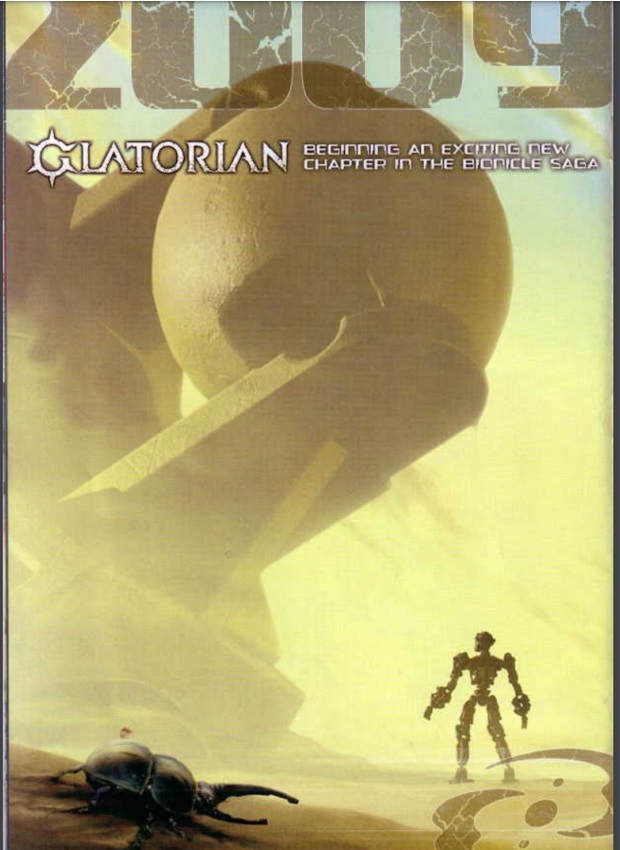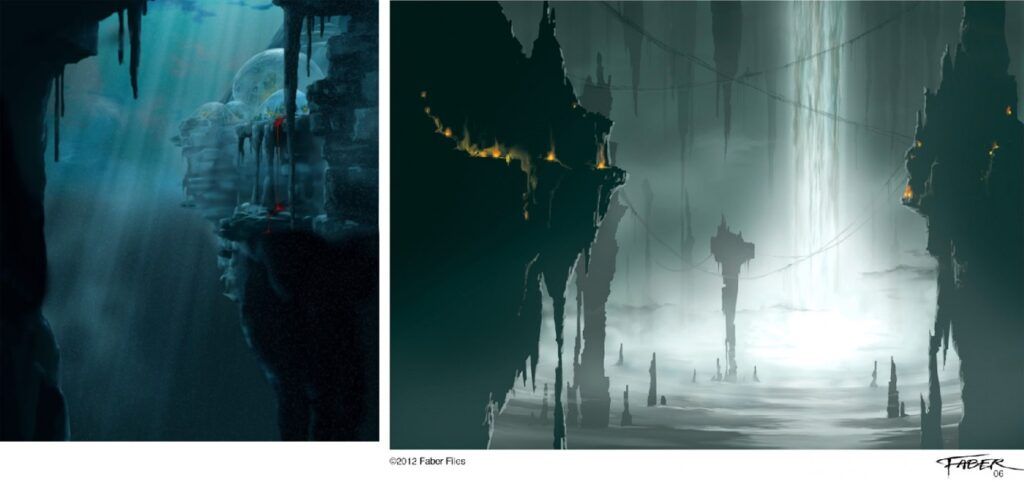When thinking about the final years of the original LEGO BIONICLE series (2006/7 – 2010), it has become increasingly apparent to me that calamity struck the storytelling aspect of the once monumental LEGO theme of buildable figures. Why did the BIONICLE lore fail to keep a larger audience?
At the dawn of time…
Fantasy-based entertainment and content must perform the function of stimulating the imagination. Combine that with the core philosophy of the LEGO brand, and you have a true behemoth of potential in play. LEGO BIONICLE accomplished this job during the first few years from 2001 – 2004. The fictional world of biomechanical beings was expansive as presented, as well as ever expanding in the minds and imaginations of the fans!
But the latter years left more and more to be desired, even as those in charge of outputting the story in written format – notably Greg Farshtey – attempted to (arguably artificially) satisfy fan curiosity via forum Q&A’s and off-hand dialogues. While likely well-intentioned at the time, the approach played a role in the downfall of BIONICLE’s lore into niche oblivion.
The world contracted. BIONICLE’s scope and thematic underpinnings contracted with each and every year after the turning point in 2005, with only a brief resurgence and glimpse of old glory in 2009’s Bara Magna and the Glatorians.

Characters were increasingly given “arcs” and “story serials” that began and concluded – all neatly wrapped and devoid of meaningful world expansion.

Powerful environmental imagery accompanied the sunken undersea world of 2007 and the cavern world of 2008, but LEGO presented little to no substance to ever back it up. No exploration, no development.
The cute little short novelettes of the day attempted to do the job, but they ended up being merely centralized pieces of “story” that neither filled out the world, nor filled the gap left in the absence of such rich media as the MNOG, early web animations and comics. While satisfying the existing niche of fans already accustomed to the BIONICLE world and the “character arcs”, the novelettes were and are quite meaningless to the non-fan.
Reader, let us imagine a potential fan at the time, back in time – in late 2008 or even 2009 – picking up BIONICLE Legends #10: Swamp of Secrets. What is this nonsense? would likely be the recoiling response from the bemused person with other things to do. And how much more so today!
In the LEGO context, this type of story media has proven to be extremely ephemeral, and not timeless (unlike the early BIONICLE games, comics, etc.) because it does not contribute to substantial world building…
Too much resources were devoted to giving fan-service backstories to characters. Easy come, easy go; mysteries “explained” off-the-cuff and without ceremony. It all seems so ridiculous and myopic in hindsight, rather than a true evolution and elevation of the LEGO BIONICLE brand.

I now can’t shake the thought: don’t just explain away every single mystery and plot! Use an existing enigma or curiosity to further fill out the world, a bit at a time. Let every opportunity for explanation become another opportunity to add another layer and more lore to the world.
So Makuta’s name is “Teridax”, you say? And his “species” was created from “antidermis” from the land of whatever? YAAWN. Who cares? Boring. LAME.
What did Makuta represent… in concept? …Delve into that, and now we’re getting to the good stuff! Not to mention, surely this broader approach would help open up more interesting possibilities for the LEGO product and set frontier.
When you have a world to build, you must never cease to stimulate the imagination.
The manner in which the cancelled Legend of Mata Nui video game would have ended the main conflict in 2001 was brilliant (the Mata Nui Online Game ended up filling the role), because it would have simultaneously added to the precedent of leaving some questions open, i.e. the desire to know more, i.e. more BIONICLE to explore!
Another unrelated, and non-LEGO videogame series that dates back to the early 1980s, Ultima, also did this well. And one need not even require convincing about such video game series whose early entries have passed into pop-culture legend, such as The Legend of Zelda and other games of the era. Such games focused not only on merely providing a mechanical game (the chassis) to play with the hands via button inputs, but also on providing a whole world (the soul) to accompany it and explore with the mind.

World building is a perpetual process… or ideally it should be. The LEGO Group should know and recognize the magic in this. Perhaps they will one day find value in acting upon it again.

Reading this brought back a flood of memories being on BZPower back then getting the latest Bionicle tidbits from Farshtey. I come from that era too, not all that long ago…
Anyway in hindsight I do see what you mean about adding “story/trivia” without meaningful context was probably not the healthiest thing for the Bionicle line longterm. It catered to the hard-core nerds of the day, without much value beyond that niche. All of my friend group at the time grew out of it – lore first, then sets later – I was one of the only ones to keep up with Farshtey’s lore and later Bionicle additions. Funny thing is I grew out of it too, but remained a Bionicle fan. The Bionicle that stuck with me most over the years was the story, lore, and sets of the early 2000s. The concept and idea and story that was laid down then – that was the peak of Lego world building.
Thanks for sharing! I really enjoy hearing stories from other fans and those who got to experience BIONICLE at the time.